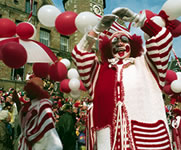
The Saale-Unstrut Wine Route is the most northerly wine route in continental Europe. It is around 60 kilometres long and follows the courses of the Saale and Unstrut rivers which have always been vital links for southern Saxony-Anhalt. Wine making has played a special role in this region for at least 1,000 years. Despite its location, the region rivals Tuscany with 1,430 hours of sun a year, which really ripens the grapes. The oldest record of viticulture in this region dates back to the year 998 during the reign of Emperor Otto III. It flourished in the centuries that followed, but then suffered a downturn. However, in spite of every conceivable setback, the local people persevered and clung to the noble grape. The wine-growing areas are particularly attractive with their patchwork of terraces, dry-stone walls, vintner's houses and rows of vines. It is almost as if it were planned with every possible taste and interest in mind.

A well-known German folk song tells of "proud, bold castles along the sunny banks of the Saale", but the countryside is also dotted with palaces steeped in history. A particularly interesting cycle way also runs alongside the Saale and Unstrut rivers. Cyclists can choose the length of their trip, set their own pace, stop for a rest where they feel like it and explore new territory. The charming limestone countryside around both rivers is known for its wine and its orchids. Nature lovers should make time for a detour and discover the beauty of these plants whilst strolling among them. Guided walks are also available and you ought to try and fit in a trip along the Mills Walking Trail in a horse-drawn carriage. The Ottonian-era imperial palace in Memleben is also worth a visit. The ancient town of Nebra, notable for its late-Romanesque castle ruins and sandstone bridge is located in the Saale-Unstrut-Triasland nature reserve.







